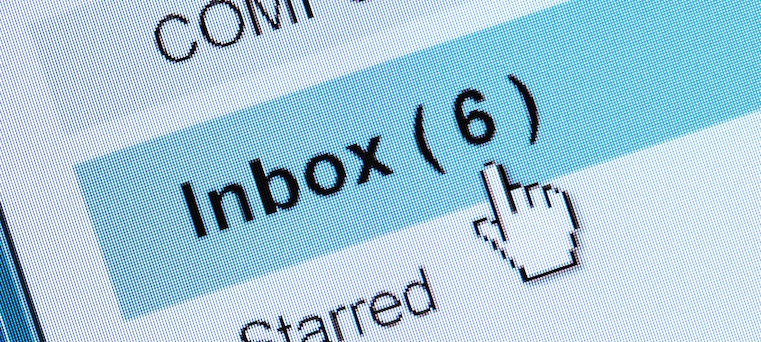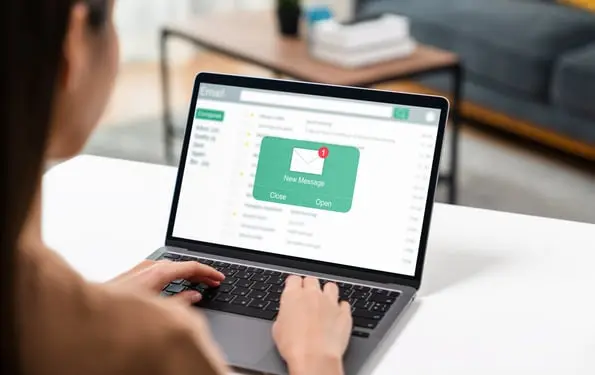When it comes to analyzing the performance of an email marketing campaign, many marketers turn to opens and clicks as a means of measuring success. And while these fundamental metrics are important to note, there are actually a lot more to consider. The keyword here being "a lot."
In fact, the wealth of data available to the modern day marketer can be super overwhelming.
Where's a marketer to start?
When we created the new email performance pages in the HubSpot Email App, this question was at the forefront of our minds. Our goal was to figure out a way to keep the fundamental metrics at the core, but also add other interesting, actionable pieces of information.
Of the new data we surfaced in the process, we were able to identify some metrics we believed would help marketers improve the performance of their email campaigns the most. Whether you're a HubSpot customer or not, we encourage you to keep track of these metrics in order to iterate and improve your email strategy.
So if you're looking for tips on what you should be tracking in your next email marketing campaign, check out the five insights we've detailed below.
5 Metrics to Measure the Performance of Your Email Campaign
1) Engagement Over Time
Much ado has been made about the optimal time of day -- and day of the week -- to send an email. And while many companies have documented how they drastically improved their email engagement by simply optimizing their send times, individual success is very dependent on the wants and needs of your specific audience.
Certainly there are generic guidelines for the best times and days to send emails, but the only way to truly find out what works best for your business is to experiment with different times and collect data on your audience's engagement over time.
When it comes to automated emails, tracking engagement over time is equally as important. Considering we don't always get our marketing right on the first try, automation provides us with an opportunity to refine workflows and emails even after they are turned on. If and when you do make changes, you'll want to be sure to measure the impact they had on the performance of your campaign using data on engagement over time.
For HubSpot customers, it's easy to track this information right in the email performance pages. For each sent email, you will see a graph (like the one depicted above) showing you the number of opens and clicks it received over time, which can be filtered by the first 24 hours, the first week, and the first month. If you're specifically focusing on automated emails, you'll find that the latter two filters are especially useful.

2) Contacts Lost
At the bottom of every list of essential email metrics is the unsubscribe rate. Because most of us only pay attention to it if it's abnormally high, the unsubscribe rate often becomes associated with our shortcomings as marketers. However, this doesn't have to be the case.
The unsubscribe rate actually provides a goldmine of insight into the success of your segmentation strategy and ability to create content that actually resonates. If you're experimenting with new content, an uptick in the unsubscribe rate could indicate that it is not relevant to your contacts, but a decline in unsubscribes might tell you that you should explore that area further.
Additionally, looking at the unsubscribe rate alongside spam reports and hard bounces will help to give you the larger context of "contacts lost." By combining these three metrics, you can generate a multi-faceted look at the health of your email list.
Keep in mind that these metrics are especially important to monitor if you're using a dedicated IP to send your emails. If you're a HubSpot customer, we offer 24x7x365 IP and domain reputation monitoring to ensure that you maintain a high Sender Score. If you happen to run into any issues, our team will assist you in troubleshooting to sustain high deliverability.

3) Time Spent Viewing Email
At HubSpot, we send many different types of emails --from offer download kickback emails to blog subscription newsletters, to announcements. Considering these emails all have different goals and are all different lengths, not all opens are equal.
In fact, there's a lot that can be said about the amount of time people spend engaging with your emails. If someone opens a kickback email, looks at it for three seconds, clicks to download the offer, and immediately archives it, they've extracted the bulk of what we intended to convey through that email. However, if they spend the same amount of time reading an event recap email, they probably only got a fraction of the information that was in it.
But what if we could go beyond those numbers to see exactly how long people are spending on your emails?
This is where the time spent viewing metric comes in handy. This metric can be used to glean insight into the depth of your contacts' engagement so that you can adjust your email length and content accordingly.
If you can categorize your emails by format, you can set goals around different categories to ensure they are receiving the desired amount of engagement -- for example, at least 40% stay on the email for three seconds for a kickback, versus at least 40% at 10 seconds for an announcement. When it comes to setting goals, keep in mind that the average English reader takes 20 seconds to scan 50 words on a web page.
For emails sent using HubSpot, you can see time spent information in the email performance pages. This information can be displayed in a chart format, or broken out at the top of the page by the percentage of viewers who opened the email for 0-2 seconds (glanced), 2-8 seconds (skim read), or 8+ seconds (read).

4) Device Type
With the onset of Mobilegeddon, responsive design has never been more important.
This is true not only for websites, but also emails as well. (Emails get a whopping 53% of emails opened on mobile.) Though it's best practice to make sure your emails are optimized for both mobile and desktop, device type data for email opens and clicks can be used to inform the decisions you make in terms of creative and content length.
When it comes to mobile email engagement, the time in which an email is sent often influences the likelihood that it'll be opened on a mobile device.
For example, if you send an email early in the morning while people are commuting to work, it's likely that they'll open it on their mobile device (or wait until they get to the office). If you send a midday email, you'll probably catch people while they are in the office where they can access it on their desktop. However, if you wait until later in the evening when your recipients are commuting home or are already home, they'll probably be back on their mobile devices.
The truth is, mobile usage is largely dependent on your audience's schedule and behavior, which is why designing for both mobile and desktop is so important. For emails with a higher percentage of desktop opens, you can design a template that will better utilize the bigger screen space and allow for more content. For emails intended to be read on the go, you'll want to keep the email short and make sure all images are optimized to be viewed on smaller screens.
There is one caveat: Because of the way Gmail handles image caching, it's impossible to differentiate between Gmail opens on a desktop and on a mobile device. With that said, HubSpot's Email App will estimate the device breakdown based on the Desktop to Mobile ratio of your email on other email clients.

5) Email Client
In an ideal world, all email clients would display your emails just as you created them.
Unfortunately, reality falls short, and there is a huge spectrum of what is supported in different clients. Given their overwhelming variety, it would be impossible to optimize for all of the email clients. But there must be a way to determine which ones to focus on, right?
Enter email client data.
If you are able to see the most common clients your recipients are using to open your emails, you can use that information to make sure the templates you're creating display properly in those clients.
Seasoned marketers will know that Outlook is one of the most notoriously difficult clients for which to optimize. It may be welcome news to hear that Outlook opens decreased from 13% to 8.7% of total opens over the course of 2014, but this varies immensely by audience. If you see that many of your contacts are still using Outlook, you know to focus some of your resources on making sure your content displays properly for them.

Do you also track these things for your email campaigns? Are there any other advanced email metrics you use to analyze performance?



![Email Analytics [Research]: 8 Email Marketing Metrics You Should Track](https://53.fs1.hubspotusercontent-na1.net/hubfs/53/Untitled%20design%20(51).jpg)


![How to Embed Video in Email [Quick Tip]](https://53.fs1.hubspotusercontent-na1.net/hubfs/53/embed-video-in-email.jpg)
![23 Email Marketing Tips to Improve Open & Clickthrough Rates [+HubSpot Blog Data]](https://53.fs1.hubspotusercontent-na1.net/hubfs/53/make-emails-more-clickable_8.webp)

![Email Marketing Benchmarks [HubSpot Data]](https://53.fs1.hubspotusercontent-na1.net/hubfs/53/email%20marketing%20featured%20image.webp)


